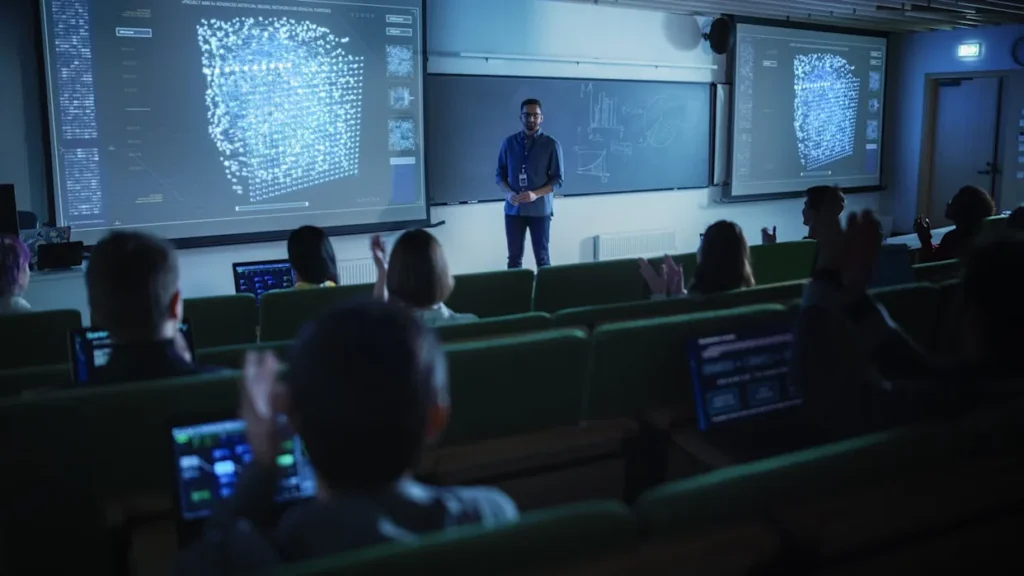Artificial intelligence (AI) has long promised to transform education, but its actual integration into universities remains uneven.
While researchers highlight its potential for personalised learning and efficiency, adoption—especially in Europe—lags behind global leaders.
AI in Higher Education: Shaping Learning Ways
Over the past few years, AI has steadily entered higher education through personalised learning platforms, virtual tutors, and administrative automation.
Tools like Smart Sparrow, Knewton, Century Tech, and Khan Academy adapt lesson content and pace to each student’s needs, using data on performance, errors, and response times.
This allows for tailored exercises, videos, and reading recommendations.
Tasks of AI in Higher Education
AI-powered tutoring systems—such as Khanmigo (Khan Academy + GPT-4), Duolingo Max, Google Socratic, and Mika by Carnegie Learning—offer step-by-step explanations, answer questions, and guide students through complex subjects like mathematics, science, and languages.
Beyond teaching, AI also supports administrative tasks such as automated grading, exam marking, and performance tracking—freeing up time for educators to focus on students.
Challenges and Uneven Adoption
Despite these advances, the role of AI in higher education is still in its infancy.
Adoption varies widely across disciplines: health sciences and technical fields lead, while the humanities lag behind.
The main obstacles include:
- Limited teacher training on AI tools.
- Lack of clear policies on data privacy and ethics.
- Slow integration into curricula.
Global Leaders in the Usage of AI in Higher Education
The United States leads in AI education research, patents, and commercial platforms, followed closely by China, which invests heavily in adaptive learning and smart classroom technology.
In contrast, Europe—despite strong ethical regulations—trails in large-scale adoption and research integration. Exceptions include the UK, Germany, and the Netherlands, where interdisciplinary projects are exploring adaptive teaching models.
Latin America is also making progress, with Brazil, Chile, and Mexico developing adaptive platforms aimed at reducing educational inequality.
Read also: How A Weak Password Crushed a 158-Year-Old Company?
Social Perception: Lukewarm Awareness
Our analysis shows that while AI in education is a hot topic among researchers, public conversation is limited.
Social media mentions tend to focus on practical tools like ChatGPT rather than the deeper academic transformations AI could bring.
How to Unlock AI’s Full Potential in Education?
Personalized learning and automation are only the beginning.
To unlock the full potential of AI in higher education, universities must train educators, set clear ethical standards, and foster collaboration between researchers, institutions, and society.
AI offers enormous opportunities for education worldwide. Closing the gap between research innovation and everyday classroom use is key to shaping the future of learning.
Source: Yahoo


